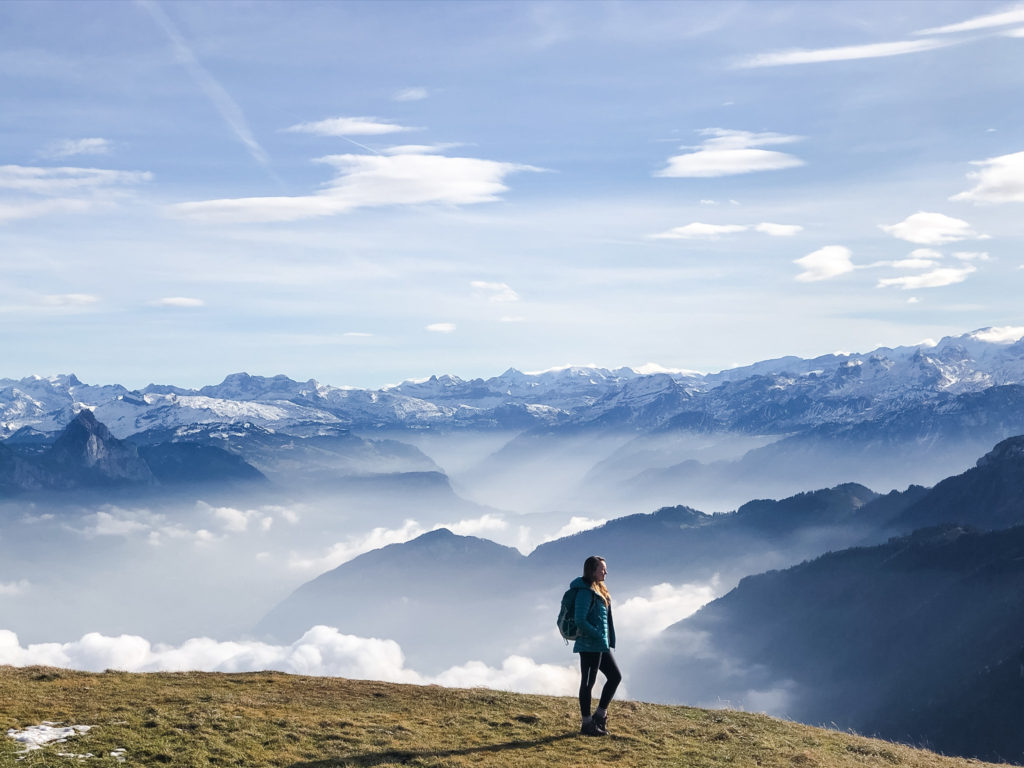
I think Lucerne might possibly be the perfect Swiss city – it combines the mountains, beautiful lakes, and charming old buildings that Switzerland is famous for into one neat package. My sister and I visited just before Christmas and the twinkly fairy lights and decorated trees everywhere made it feel like a winter wonderland!
But before we dive in… is it Lucerne or Luzern? Well, both! They are simply different spellings for the same city. Luzern is in the German-speaking part of Switzerland. So, the standard spelling at the train station, on street signs, or on public buildings is Luzern. But, given how multilingual Switzerland is, it is also common to see the English or French spelling, Lucerne.
Don’t Miss
The Kapellbrücke – oldest wooden covered bridge in Europe, and the symbol of the city of Lucerne.
Mount Rigi Mineralbad – beautiful modern spa nestled into the side of Mount Rigi, with indoor and outdoor pools, saunas and a selection of massages and wellness treatments. Stay at Hotel Rigi Klum for exclusive access.
Snowshoeing – one of my favourite winter activities (after skiing!). Both Mount Pilatus and Mount Titlus have multiple marked routes, with rental shops at the cable car stations.
The Titlus Cliff walk – probably the most exposed you can get yourself on a mountain in the height of winter without some serious mountaineering skills! This is the highest suspension bridge in Europe – an impressive 3,041 metres above sea level and 500 metres off the ground.
Fondue – gooey, melted cheese soaked in wine and kirsh. What more is there to say?
Need to Know
Language French, Swiss German
Currency Swiss Francs (CHF)
Nearest Airport Zurich (ZRH)
Getting Around Walkable, excellent Public Transport. Travel passes such as the Tell Pass and the Swiss Travel Pass offer excellent discounts on public transport.
Staying in Touch Switzerland is not part of the EU, so is not included in free roaming – although many providers offer deals which includes Switzerland. Pre-paid local SIMs are widely available, including at Zurich airport. Hotels, bars and restaurants tend to have free WiFi.
Weather Cold winters and warm summers. Between late November and early March, temperatures hover around 8°C (45°F), dropping below 0 at night and on colder days. Snow is common in December and January.
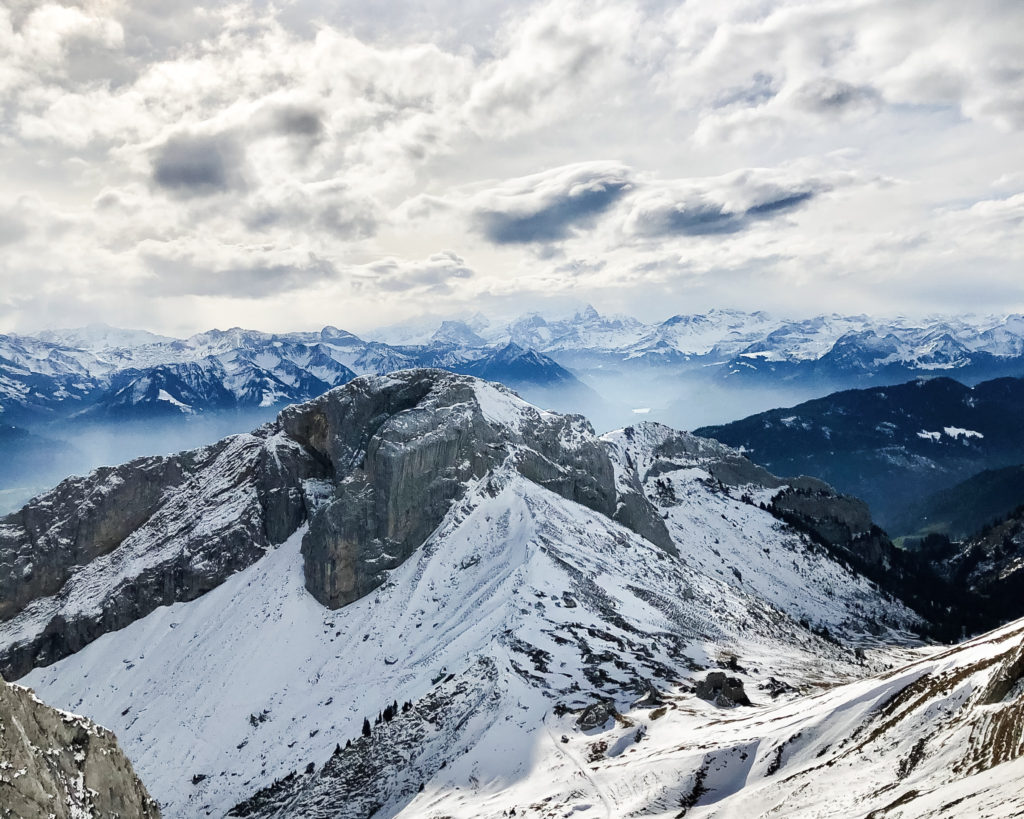
GETTING THERE
We flew into Zurich, and it was incredibly easy to get a train direct from the airport to Lucerne. Adult ticket prices vary depending on the time of day, but we paid about £6.70/€8 each. The journey took one hour, with trains departing every half an hour. It was our first introduction to the fabulously efficient Swiss public transport system and we spent most of the journey alternating between declaring our new found love for the wonderous Swiss efficiency, and gasping at the scenery speeding past the full length windows. I bought our tickets via the Trainline app. I tend to find they have the best prices, have wide coverage across the entire of Europe and paper free tickets.
The next closest airport is Geneva, which is 3 hours and half away by train.
GETTING AROUND
Lucerne is a compact town, and all of the main sights were within easy walking distance. Bus, rail and boat links will easily and quickly get you to the vast majority of destinations in and around the region.
Given how excellent Swiss public transport is – and the various options for travel passes to make it more affordable – I would not recommend hiring a car. Not least as parking in Lucerne is incredibly expensive.
TOP TIP – buy a Tell Pass. It cost us 150CHF (£121) each for three days and gave us unlimited travel on all buses, boats, trains and cable cars in this region of Switzerland. This was insanely good value. To give you an illustration, a return ticket on the Mount Titlus cable car alone was 96CHF (£78). Overall, we added up our total transport spend would have been 280CHF (£228) each without the Tell Pass. It was such good value we kept asking the staff on transport if it really was OK to use! It is worth asking your hotel if they offer any discounts – a number provide Tell Passes for free to guests as an incentive to stay. If your trip to Lucerne is part of a wider Swiss itinerary, the Swiss Travel Pass also gets you discounts on all the activities listed here.
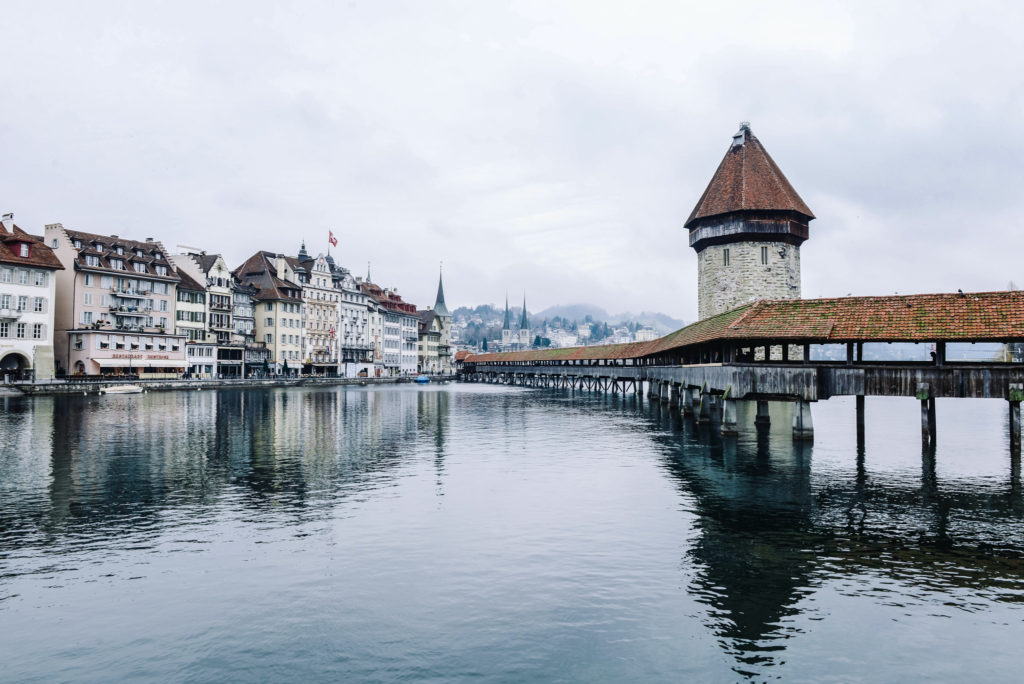
WHAT TO DO IN LUCERNE
Walk across the Kapellbrücke, the covered wooden pedestrian bridge across the River Reuss. It is the oldest wooden covered bridge in Europe, and is the symbol of the city.
Visit the Lion Monument, a rock sculpture which commemorates the Swiss Guards killed in the French Revolution when revolutionaries stormed the Tuileries Palace in Paris.
Marvel at the historic city walls, the Museggmauer – if you follow the path alongside the wall it takes you up the hill for lovely views out over the river and city below.
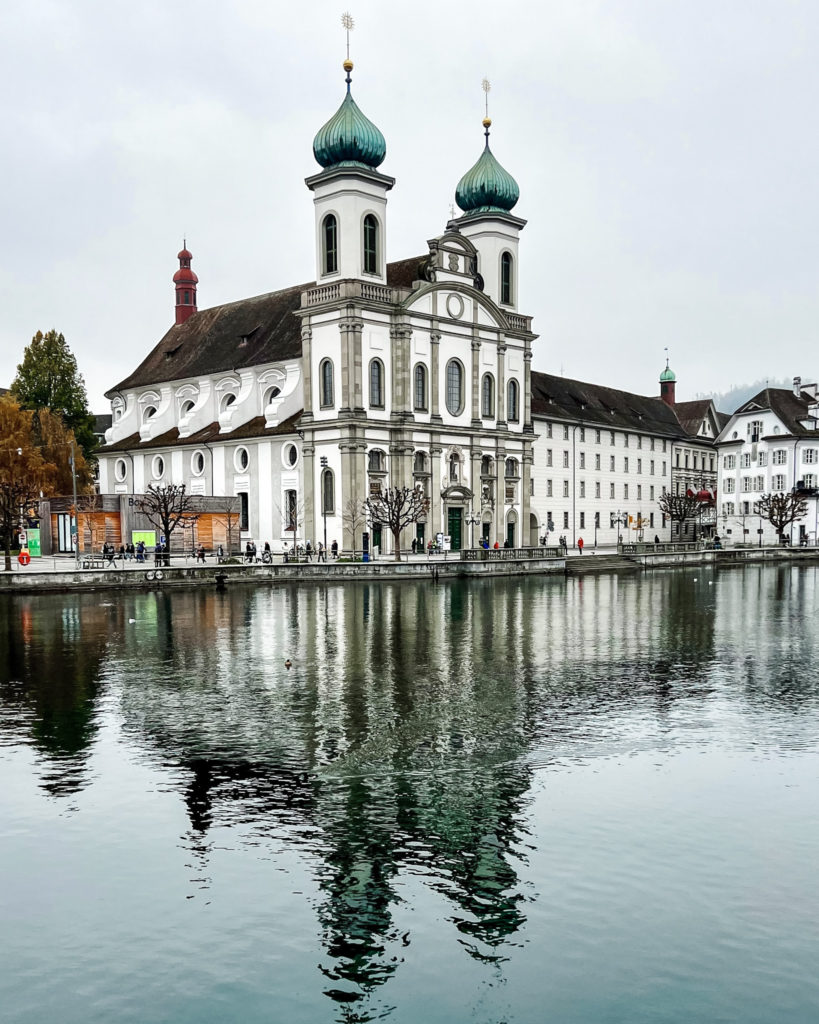
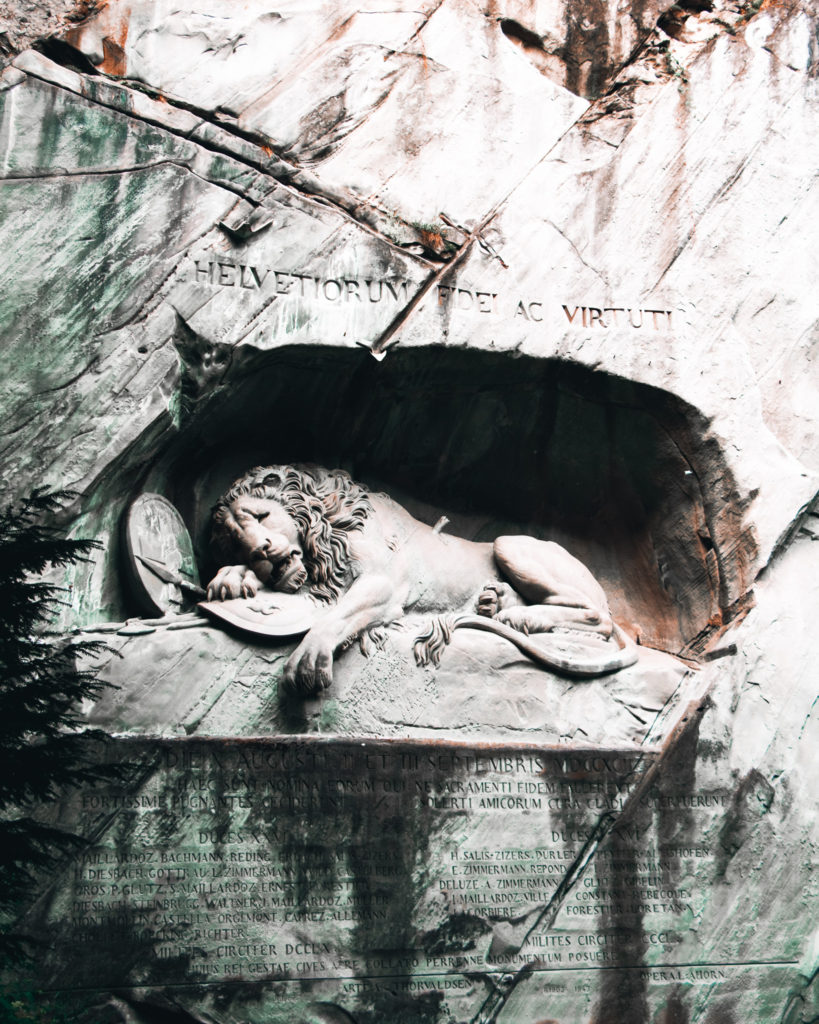
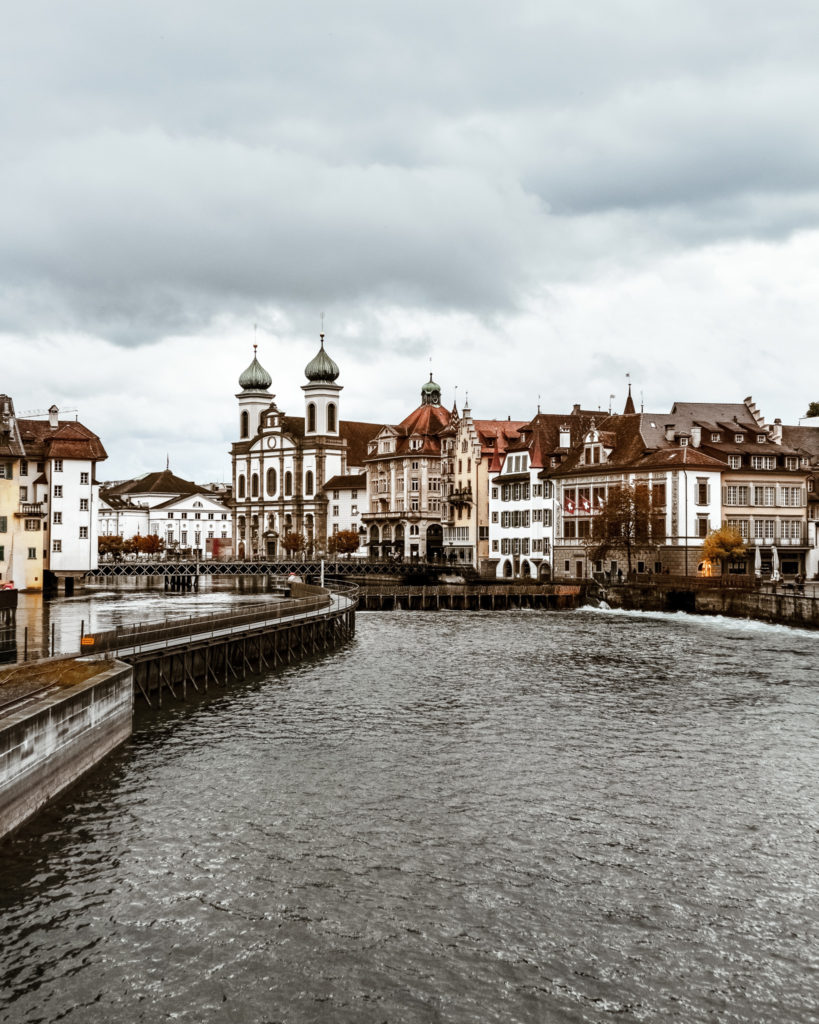
Wander through the Old Town, on the north bank of the river, with its tall painted houses and cobblestone streets. All of the old centre is free of traffic, and strolling through the old streets is a lovely way to spend an afternoon.
Take a boat trip on Lake Lucerne, around which the city sits. If you have a TellPass, the very smart ferries are all included so you can use them to set out across the lake.
THE MOUNTAINS
The mountains of Central Switzerland are some of the most dramatic, easily accessible mountains anywhere in Europe. As such, they have become famous for feats of engineering designed to provide accessible visitor experiences – including the world’s steepest cogwheel railway (Mount Pilatus) and Europe’s first mountain railway (Mount Rigi).
Mount Rigi, Mount Titlus and Mount Pilatus are all easy day trips from Lucerne. Mount Rigi was my pick of the bunch on this trip – but I may have been swayed by the spectacular weather we had that day! No matter which of the Lucerne mountains you pick, you’ll be rewarded with stunning views of Lake Lucerne and the surrounding Alps… weather permitting! And even if the weather is terrible, there are still plenty of winter activities – and warming mountain cafes – to keep you occupied.
MOUNT RIGI
Known as the Queen of the Mountains, Mount Rigi (1,798 meters above sea level) entirely deserves the grand title and all of the accolades she gets. We had very low expectations when we set out as the weather down in the valley was completely miserable. However, just before the little train pulled into Rigi Klum we popped up above the clouds to the most spectacularly sunny day I think I have ever had in the mountains! I have never seen a cloud inversion so impressive.
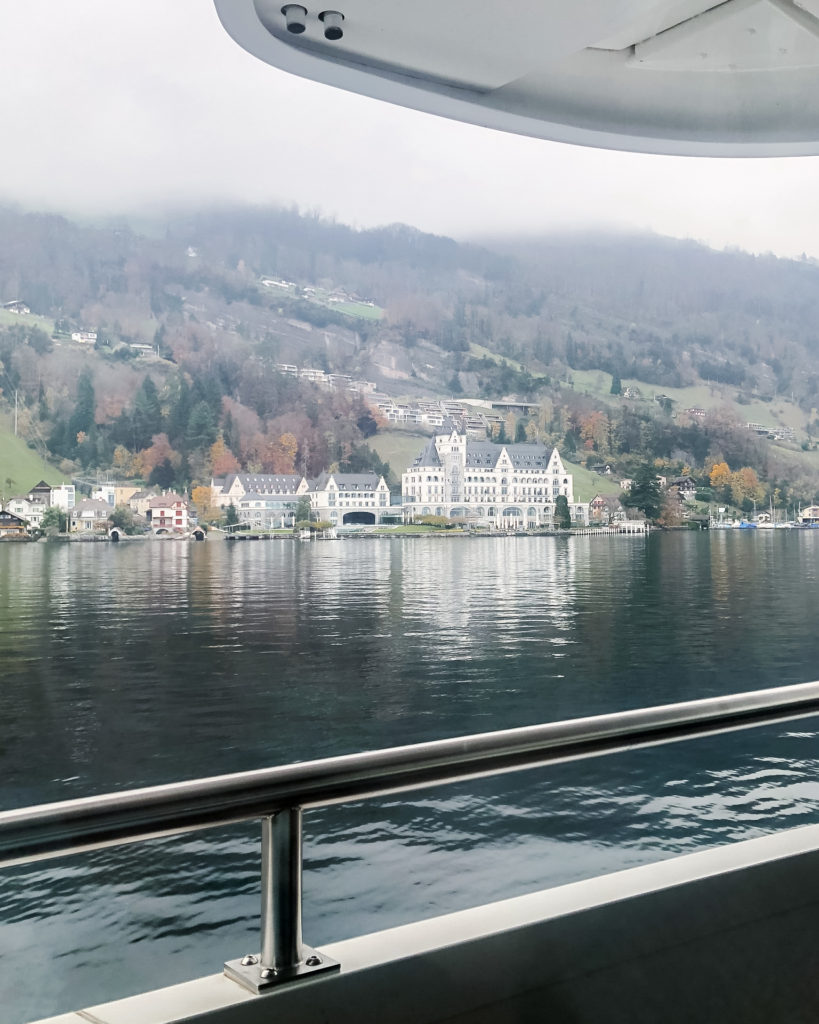
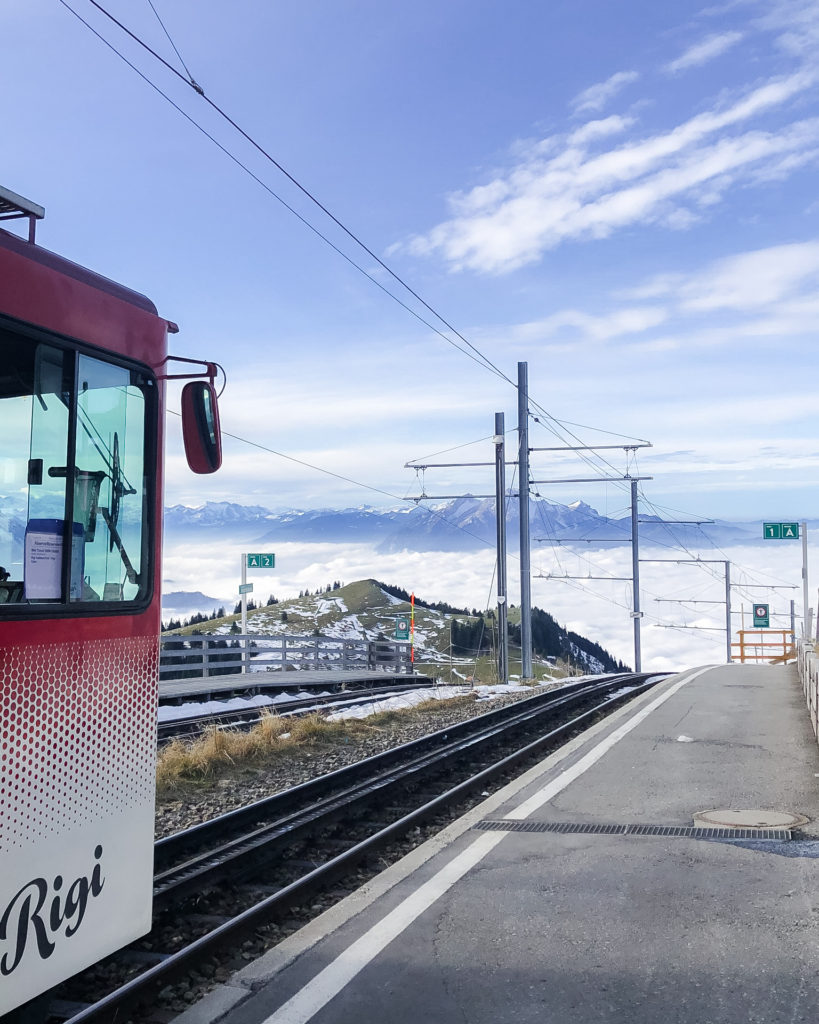
To reach Mount Rigi, get a ferry from central Lucerne to either Weggis or Vitznau, before getting on a gondola (from Weggis) or a cogwheel (from Vitznau) up to either Rigi Kaltbad which is half way up the mountain, or Rigi Klum at the top. Riding the Rigi Cogwheel is an experience in itself – it was the first cogwheel in Europe and has been operating since 1871.
I’d recommending getting the cogwheel on the way up to see the views in the sunlight, and then the gondola down to enjoy the sunset on your return. Adult Summer Day Ticket 72 CHF (£58); Winter Day Ticket 50 CHF (£40) (free with a TellPass).
The train on the way up was very busy as a tour bus had arrived at the ferry stop just as we got on. However, once you get up onto the mountain it is very easy to avoid the crowds as most seemed to stay near the café at the peak or the various restaurants and shops at Rigi Kaltbad. There are over 120 hiking trails across the mountain, although not all are accessible in the winter. I really recommend walking the 4.3 mi/7 km easy Rigi Panorama Trail between Rigi Kaltbad and Rigi Scheidegg. The name of this walk is in no way an exaggeration. It was mostly on well maintained paths, and almost entirely flat with only 300m of ascent, but still offers amazing views out over the valley.
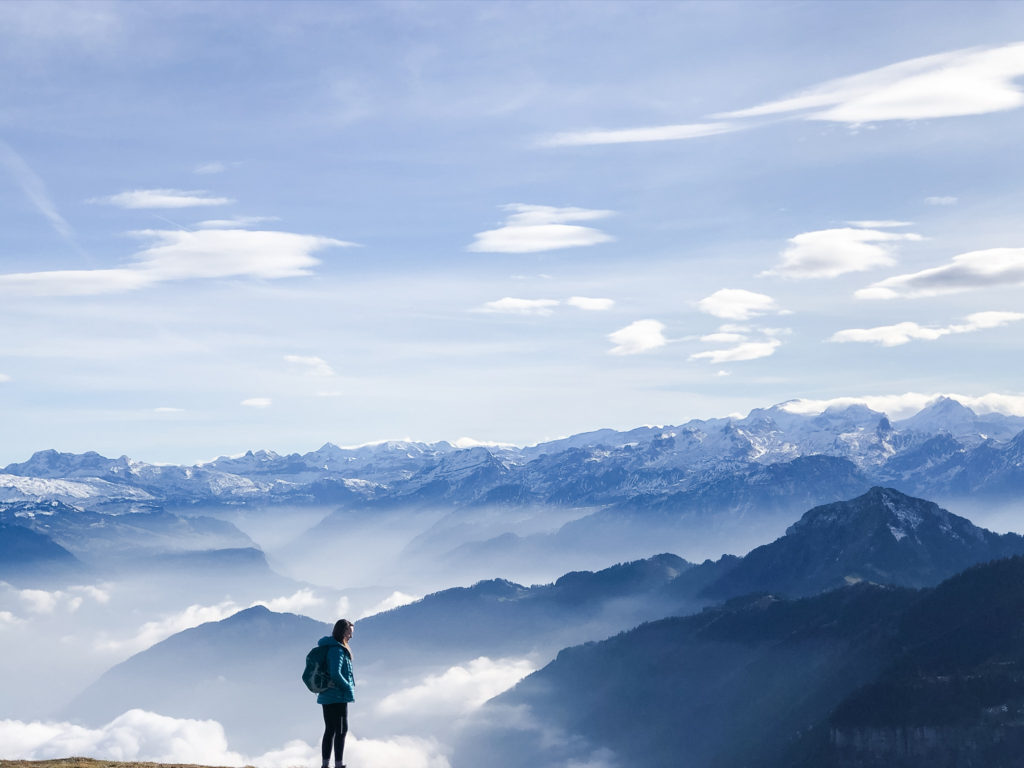
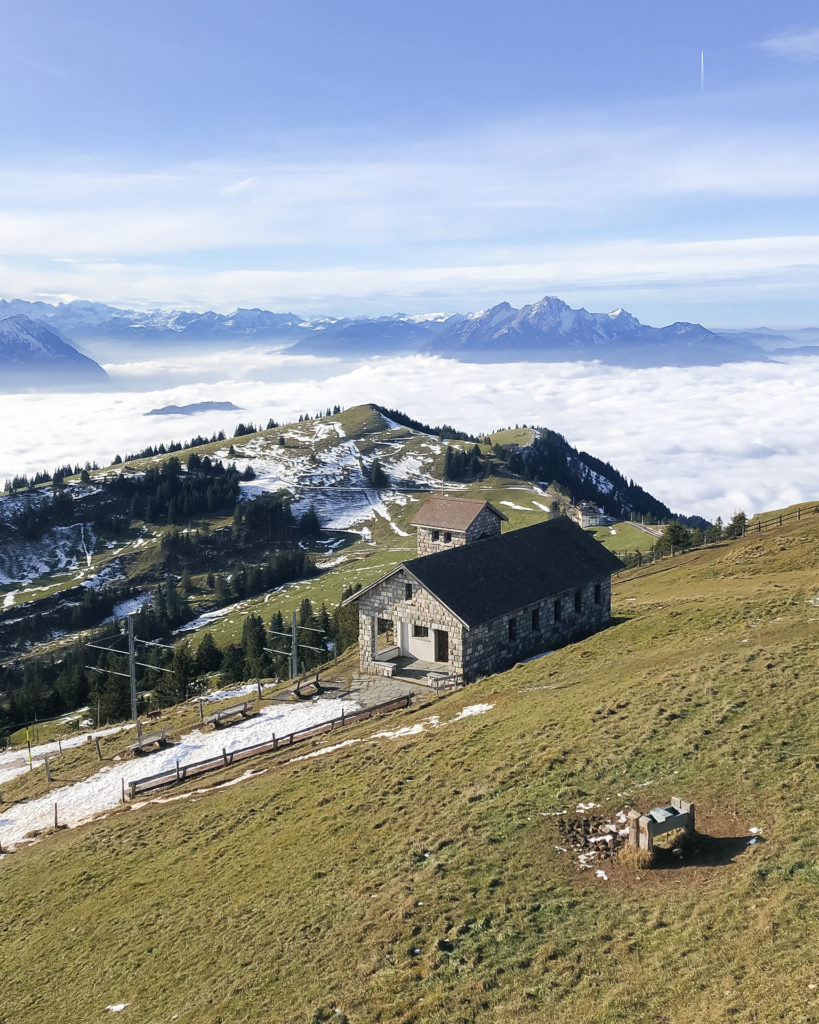
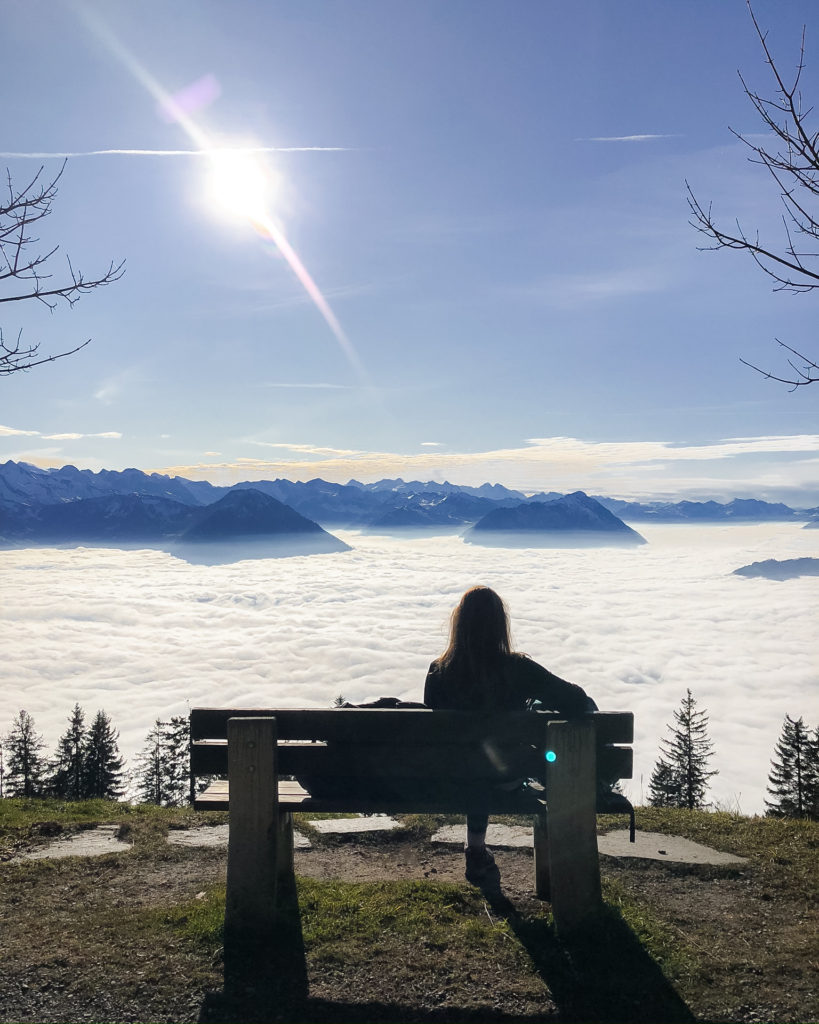
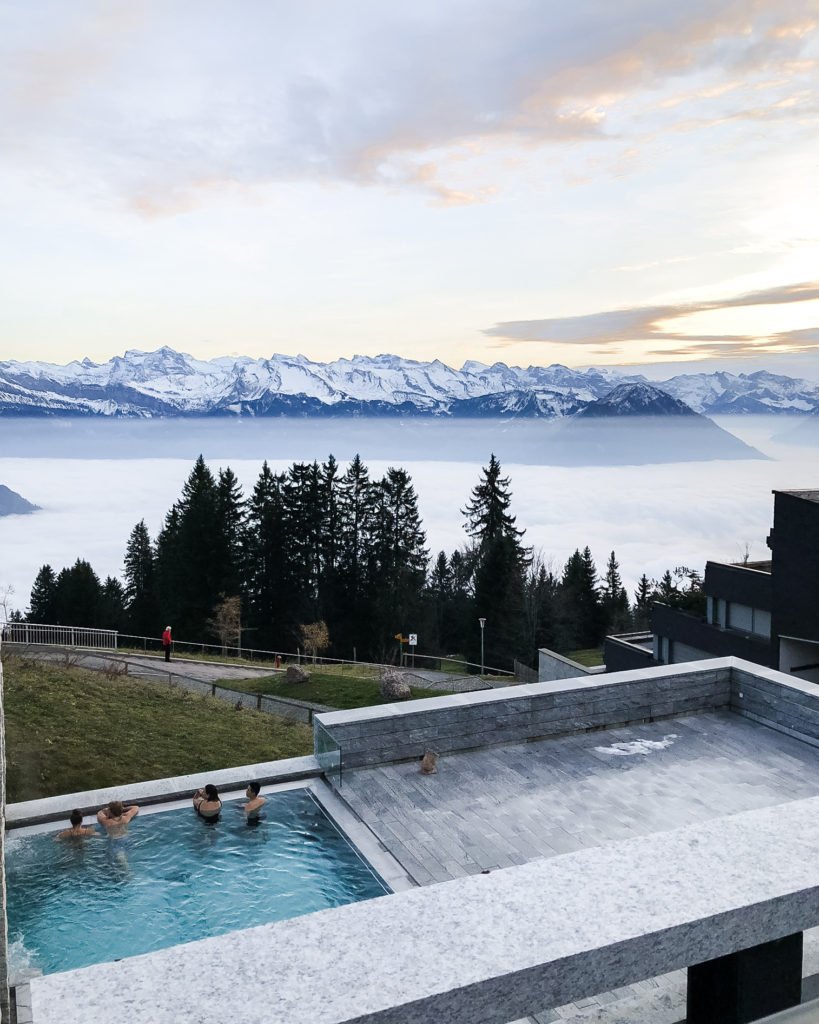
Once you have done your physical excursions for the day, book a massage at the Mineral Baths and Spa at Rigi Kaltbad. This super slick building is nestled into the mountain and offers indoor and outdoor pools, saunas and a selection of massages and wellness treatments. We spent a very relaxing afternoon floating in the pool before booking in for a massage. Our very friendly Swiss German masseurs were masters of their trade, and we both agreed the massages were some of the best we had had. Best of all our wonderous TellPass got us a 20% discount! If you stay in the attached Hotel Rigi Kaltbad you get two hours access all to yourself in the morning.
MOUNT PILATUS
Mount Pilatus is a mountain massif made up of several individual peaks overlooking Lucerne. The highest peak is Tomlishorn, which rises 2,128 metres above sea level.
To get to Mount Pilatus from Lucerne, the easiest route is via bus (included in the Tell Pass) to Kriens. All of the stops are announced on the bus so it is easy to find your destination. Arriving in Kriens, there is a short walk uphill to the cable car station and a series of cable cars will take you to the summit. Adult Summer Day Ticket 72 CHF (£58); Winter Day Ticket 57.60 CHF (£47) (free with a TellPass). In summer, there is also an option to take the world’s steepest cogwheel up the mountain. As we ascended on the cable car, it got snowier and snowier before we popped out into a winter wonderland!
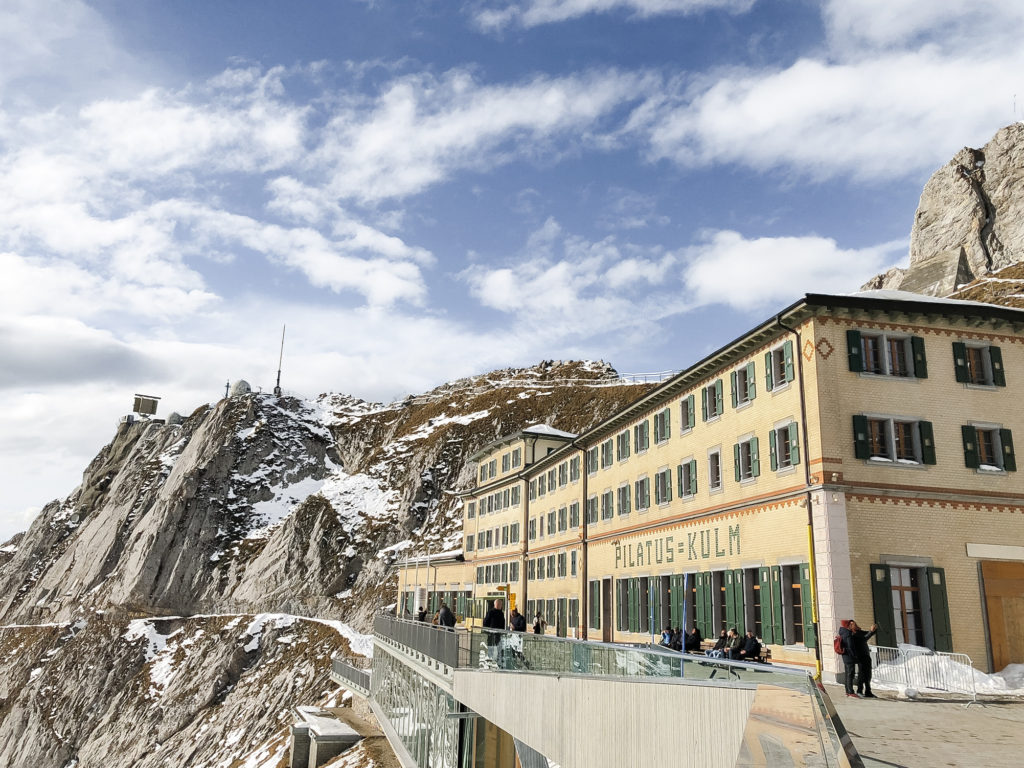
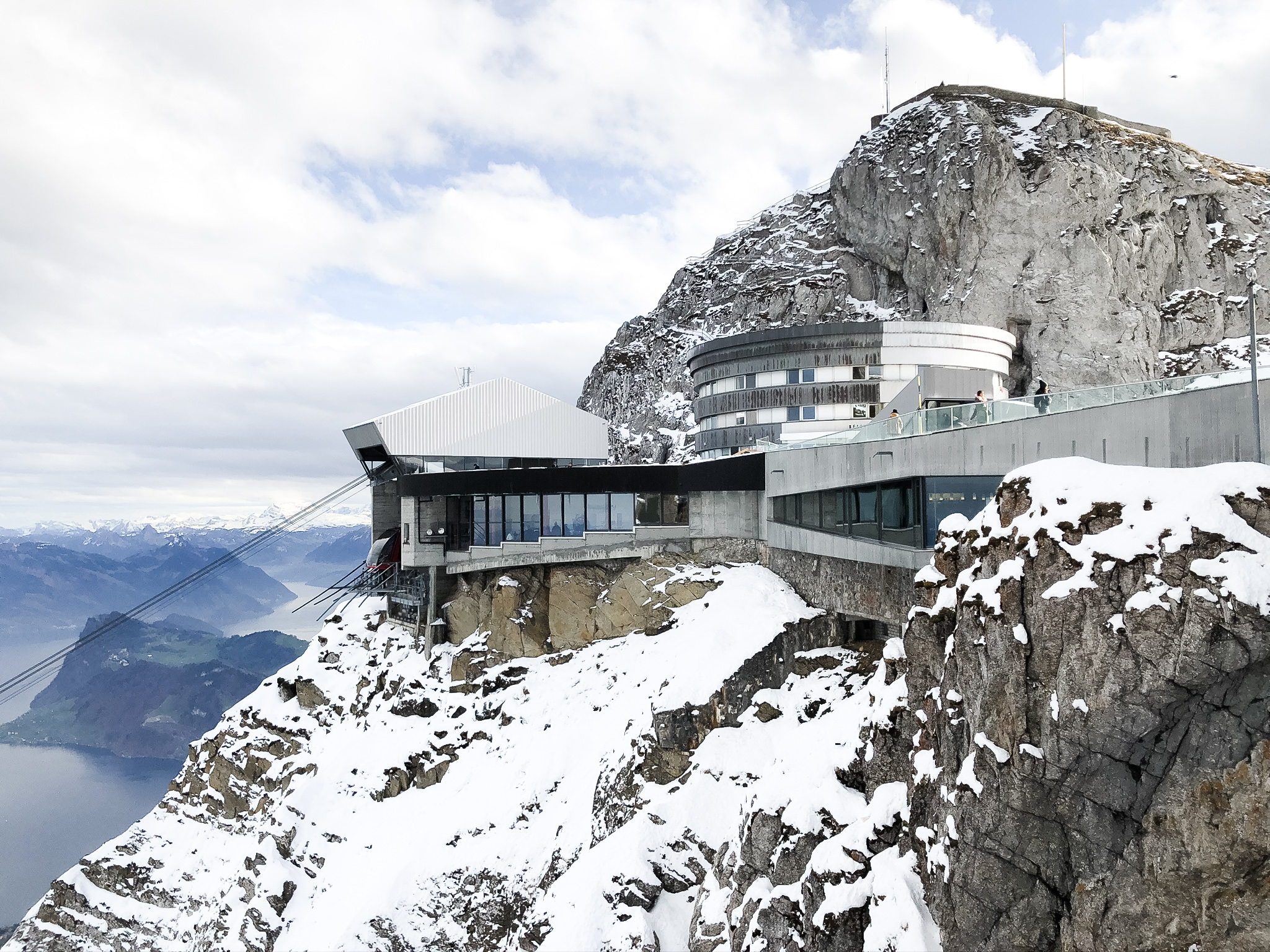
Aside from some great skiing options (find out more here), Mount Pilatus has a number of activities to occupy you whilst looking at the panoramic views over the Swiss Alps. At the most sedate end of the spectrum, at the top there is a big visitor’s centre, viewing deck and several cafes. The buildings might look familiar – they featured in James Bond’s On Her Majesty’s Secret Service.
Around the visitor’s centre there is a short walkway – known as the Dragon Trail – cut into the rockface, with multiple viewing platforms. The name pays homage to one of the many legends and myths associated with Pilatus. In the Middle Ages it was believed that dragons with healing powers lived in the crevices of the mountain.
Between Krienseregg and Fräkmüntegg there are three marked snowshoe trails – find the maps here – and shoes can be rented at the Kriens Valley Station.
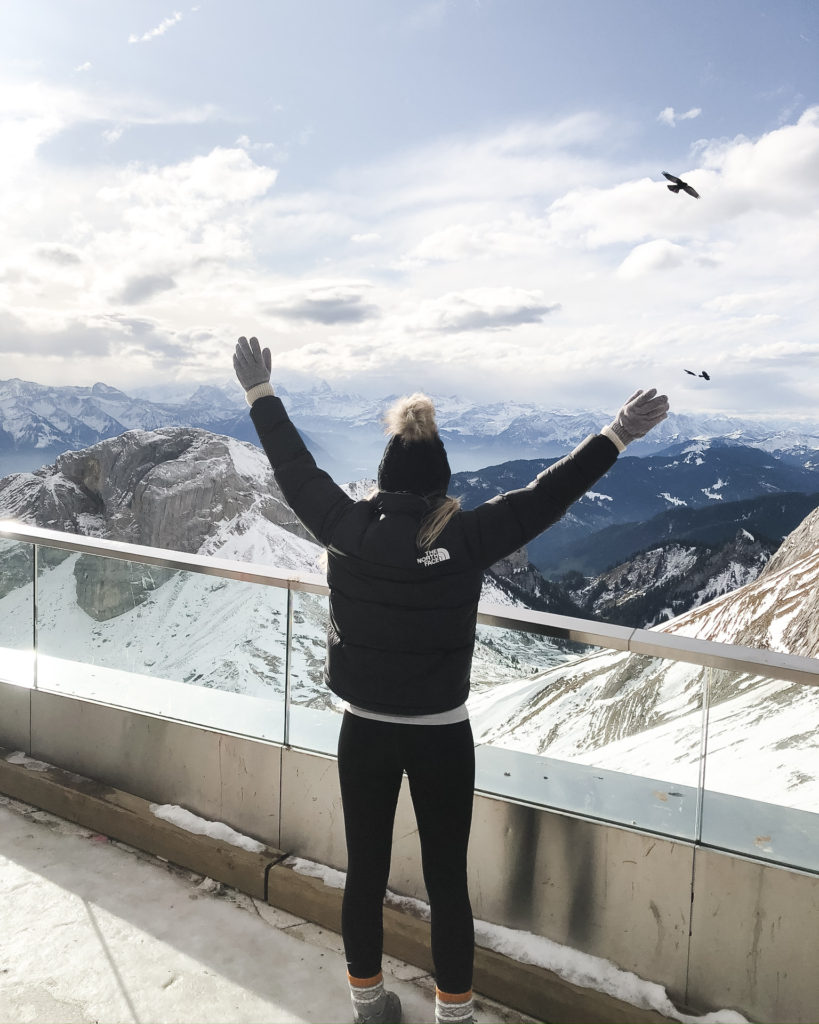
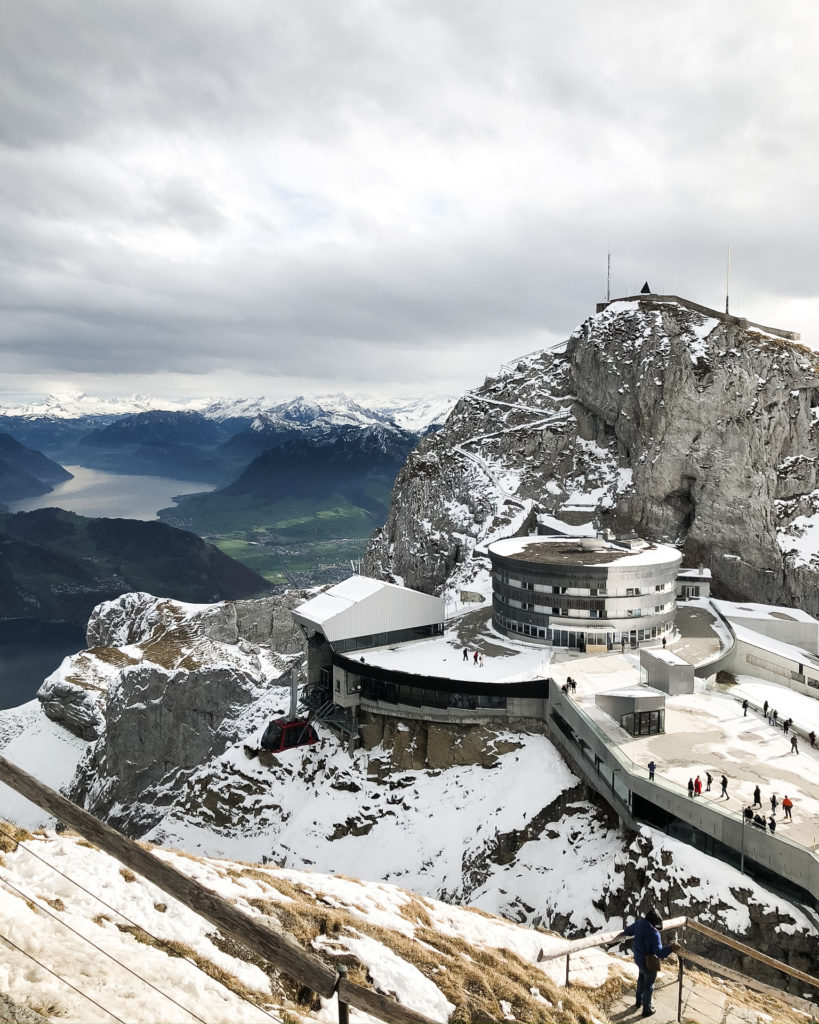
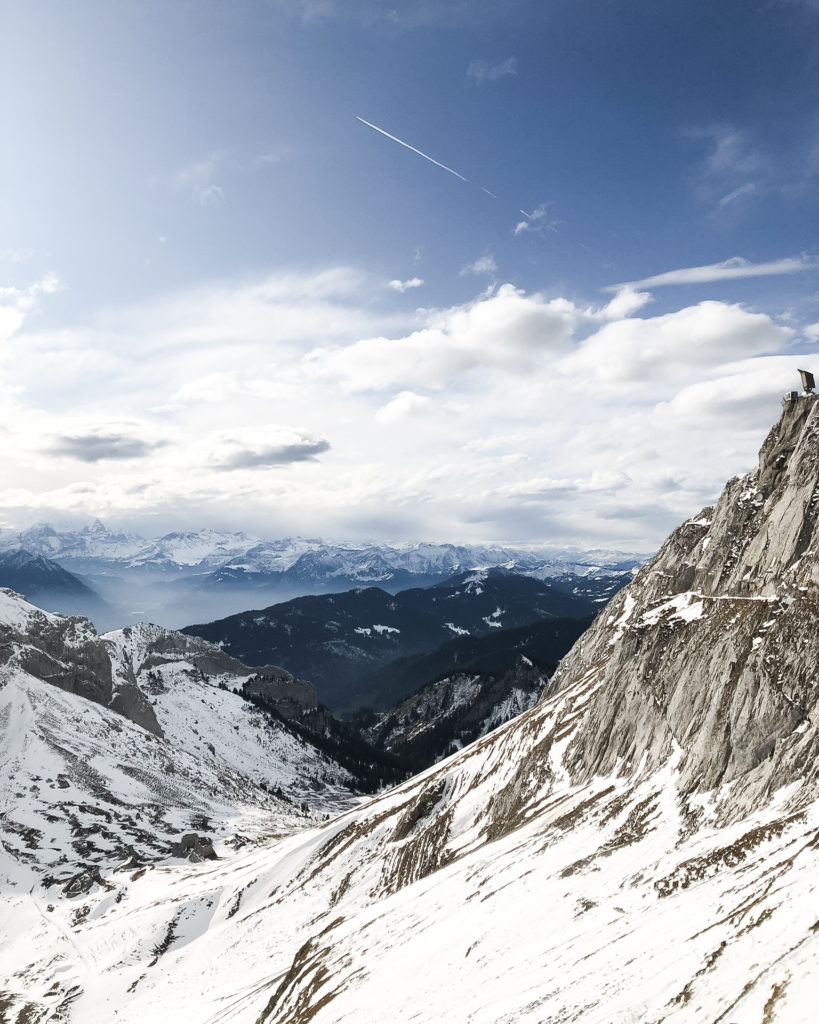
If we had had more time, I would absolutely have gone for the Fondue Gondola ride! For 65 CHF (£52) you can float above the mountains of Central Switzerland whilst tucking into a bowl of steaming cheese fondue, during the 45 minute ride from Kriens over Fräkmüntegg and back to Krienseregg. Available every weekend between December and March – book online in advance.
In the summer, Pilatus is a hiker’s paradise. There is something for everyone, with easy routes offering breathtaking mountain views, to the hike up to the top for the more hard core amongst you. See the official hiking trails here.
Given the plethora of activities and ease of access, Mount Pilatus was much busier than the other places we visited around Lucerne, even in late November. It was easy enough to avoid the crowds of tour buses once we were off the cable car, but go early if you want to avoid queuing.
MOUNT TITLUS
At 3,238 metres above sea level, Mount Titlus is one of the highest summits in Switzerland that you can easily access without some serious mountaineering skills.
The journey from Lucerne is straightforward – get a train to Engelberg and head straight to the gondola station for Mount Titlus. Adult 96 CHF (£78) (free with a TellPass). Your trip up Mount Titlus will give you the chance to try out the world’s first rotating cable car, the Titlis Rotair, which offers panoramic views of the surrounding valley. Unfortunately for us, the weather had started to get a bit misty down in the valley when we arrived, but by the time we got to the top visibility was zero and the icy wind was blowing fiercely!
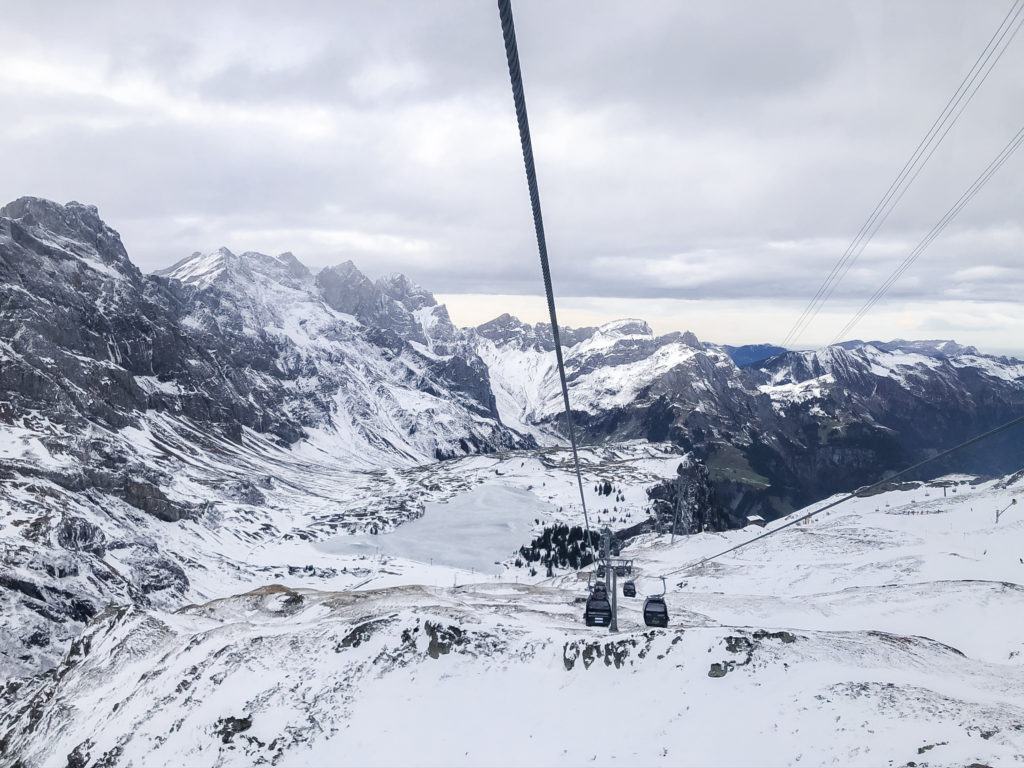
Nonetheless, there are a number of activities to enjoy at the top of Mount Titlus, even in the middle of a snow storm! If skiing is your thing, there is plenty to choose from – check out the details here.
The Titlus Cliff walk features the highest suspension bridge in Europe – an impressive 3,041 metres above sea level and 500 metres off the ground. I have a good head for heights, but walking across the open metal bridge in a howling gale did require a few deep breathes (and three pairs of gloves!).
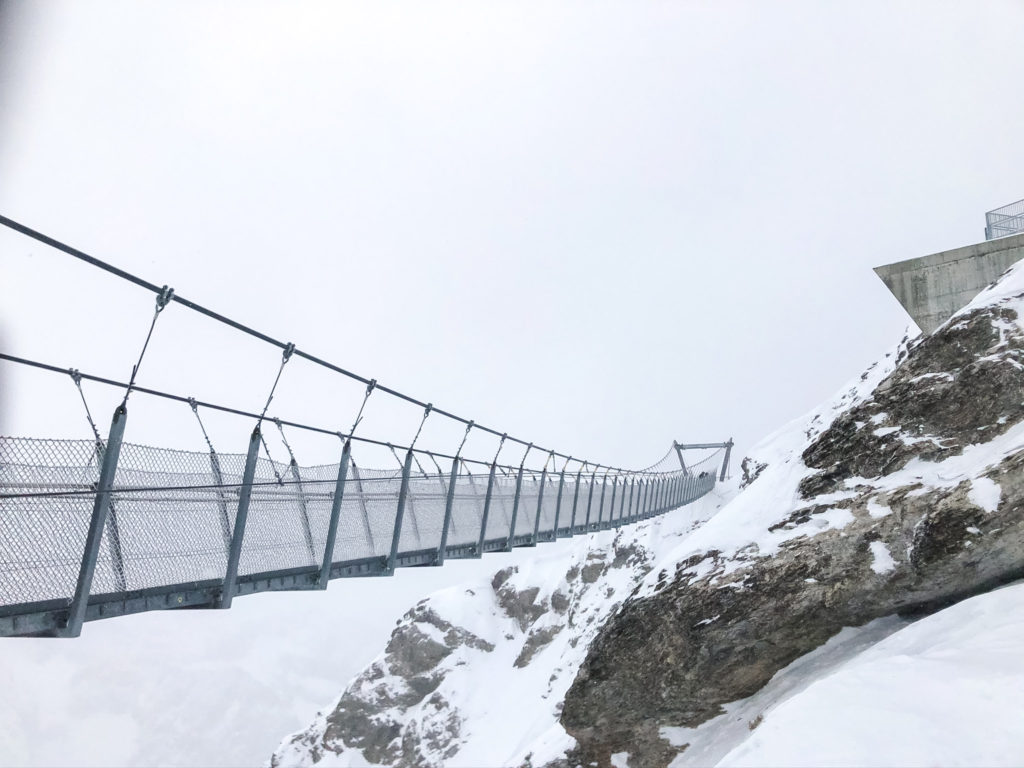
On one side of the Cliff Walk there is the 150m long Glacier Cave Walk, which meanders through an underground tunnel which descends 20m below the surface of the glacier to a viewing platform – although we couldn’t see much beyond the wall of white!
Thankfully on such a punishingly cold day, there are a number of cafes and restaurants dotted across the mountain, usually at the cable car stops, selling hot drinks, snacks, and traditional Swiss mountain meals.
On our way back down the mountain, we stopped at Trubsee, which is the first level you come to on the ascent. In the summer there is a large lake here, but it was completely frozen over for our visit. Instead, we joined a line of children and had a go at sledging down the nursery ski slope! The little plastic sledges were available for free, and there is even a small conveyor belt lift to take you back up for another go.
Alternatively, if you want something a little more challenging, I would really recommend heading to the Stöckli Ski Shop at Trubsee and renting snowshoes to explore the hiking paths round the lake.
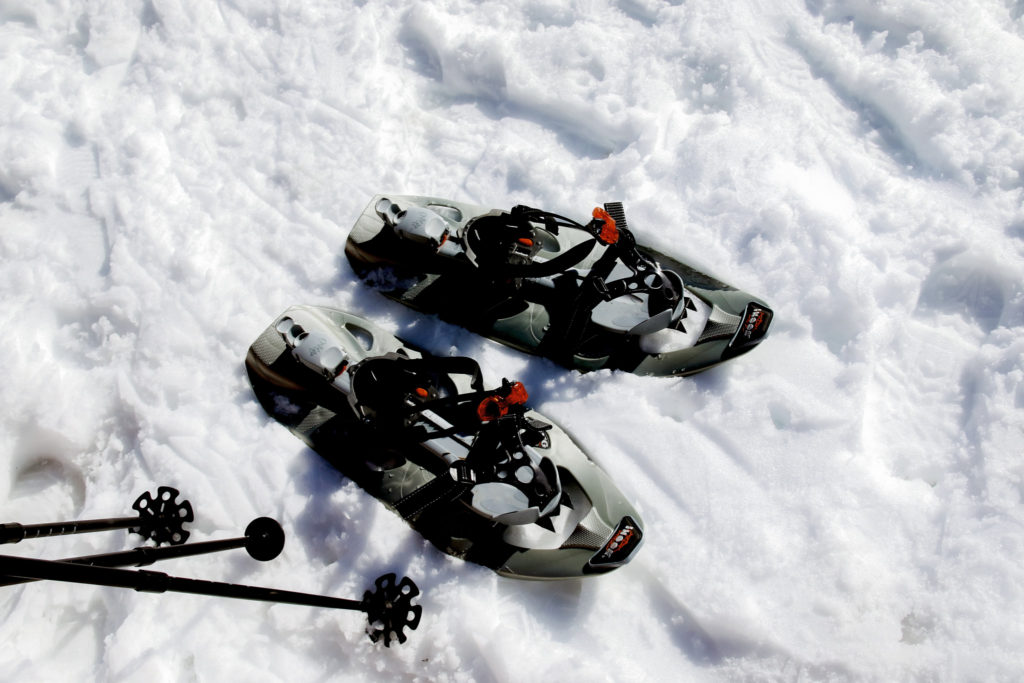
WHERE TO EAT IN LUCERNE
Jacob – after a long afternoon exploring the streets and Christmas shops of the Old Town, we stumbled on this lovely little wine bar by the Lake. They serve a huge number of wines from around the world, including some particularly tasty reds from their own winery. Everyone around us seemed to be locals stopping by for drinks with friends after work – always a good sign! We enjoyed this place so much we ended up ordering a couple of antipasti plates and skipping dinner!
Opus – we had a lovely lunch here, right on the riverside. The goats cheese salad and antipasti boards were excellent. This would be a great spot for dinner.
Zunfthausrestaurant Pfistern – in the Old Town, just beside the Kapellbrücke, serving over a hundred different fondues! Whilst we were there, the outside terrace was laid up with big patio heaters and guests are given warm blankets to add to the reindeer skin-covered chairs. In the afternoon they served traditional hot glühwein.
Alp Chäserenholz – restaurant and a cheese factory 300 m from summit of Mt. Rigi. Food is comforting and homestyle cooking. Go for the Swiss Alpine Macaroni – a seriously filling dish of potato, pasta, cream, cheese and apple sauce.
Mount Titlis Panorama Restaurant – lovely views from a traditional chalet style eatery. The pizzas come particularly highly recommended, and the traditional Swiss rösti looked delicious! Pricey (as with all of Switzerland!) but worth it for the views.
Max Chocolatier – you can’t come to Switzerland and not have chocolate! This beautiful shop makes exquisite handmade chocolates. There is also a small café.
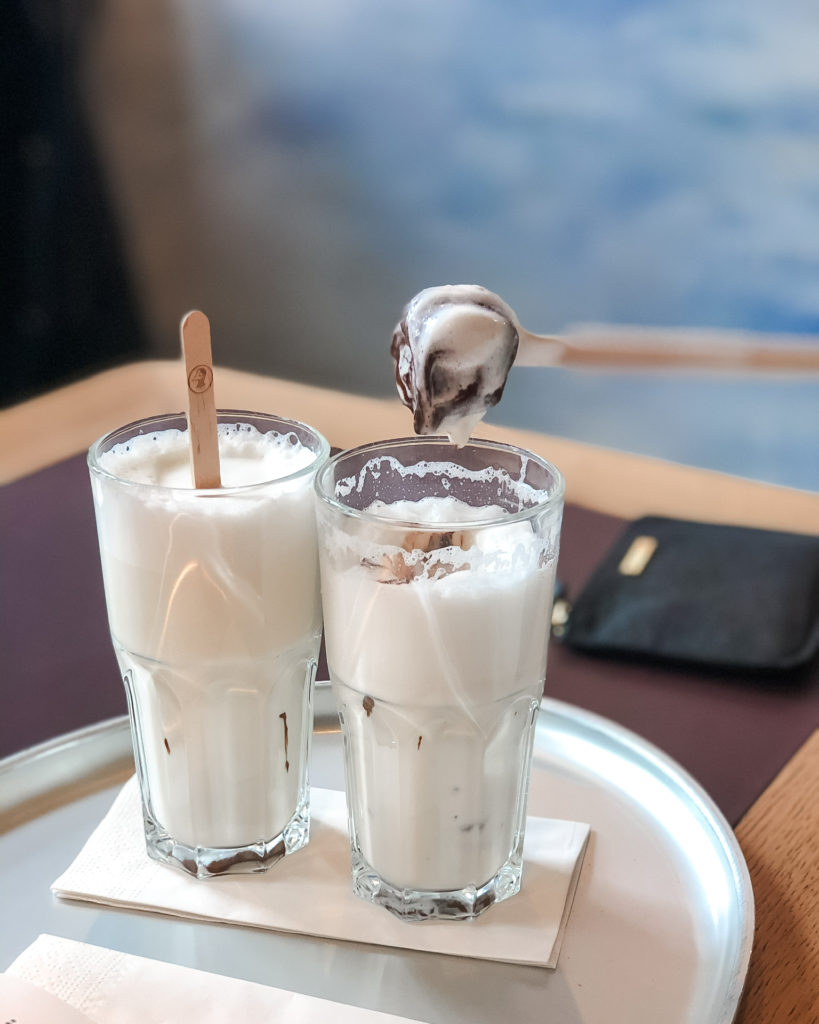
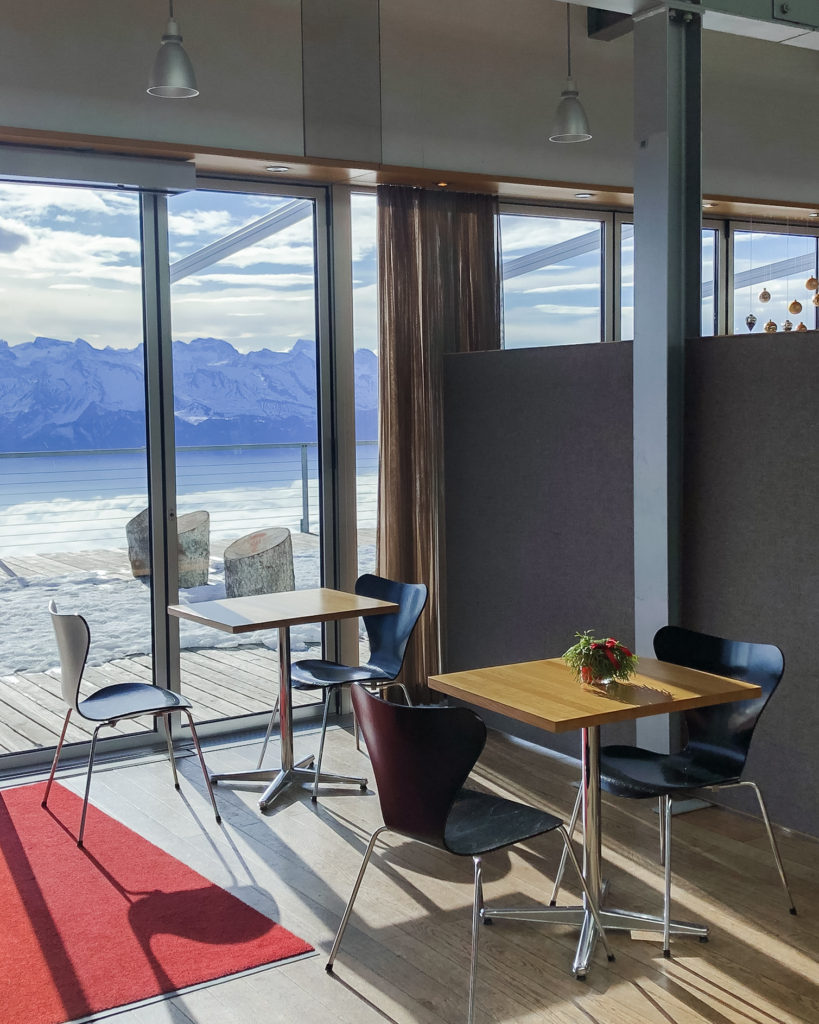
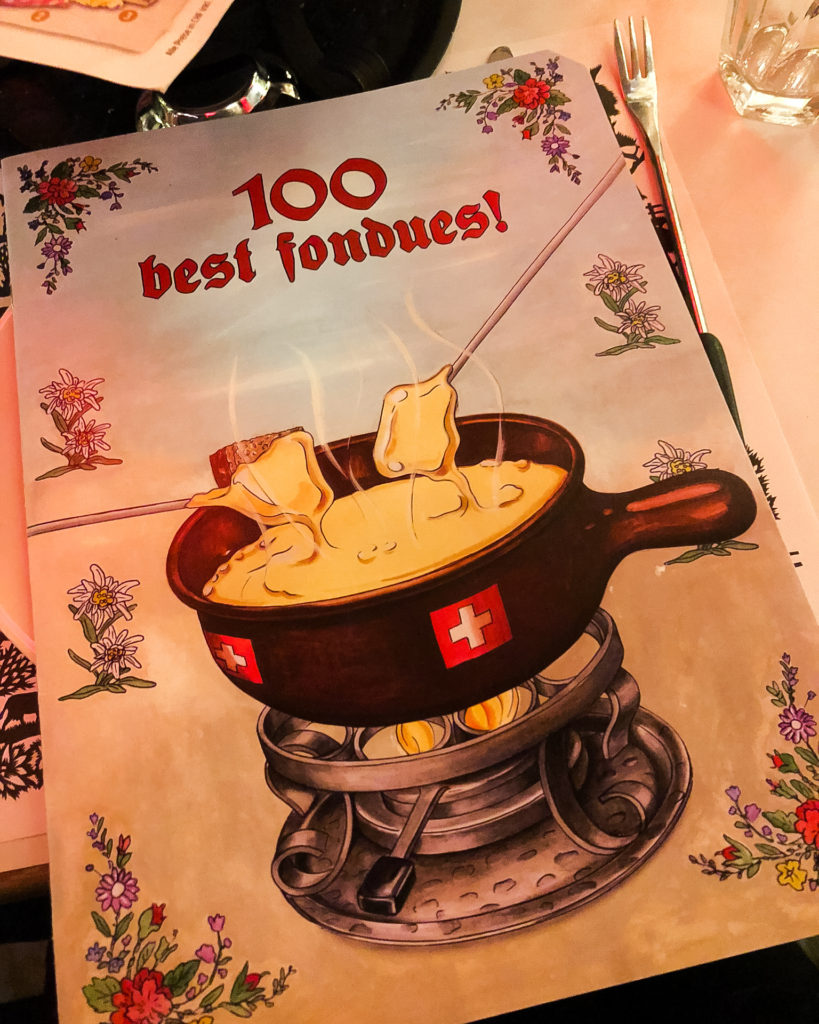
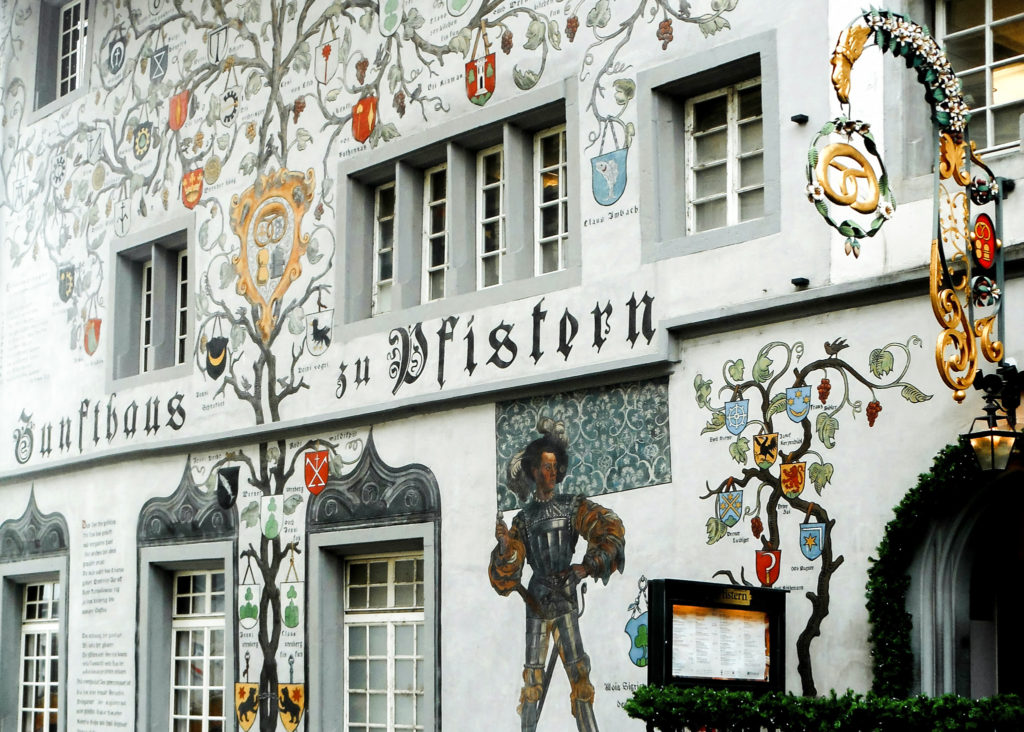
WHERE TO STAY IN LUCERNE
Hotel Des Balances – right by the train station in Lucerne, with picture postcard views over the houses on the other side of the water. The hotel was first opened in 1807 and the building itself dates back to the 13thC. A complete renovation in 2015 has given it an old world luxury feel. My top pick for Lucerne.
Chateau Gutsch – the option to treat yourself. Looking like a fairytale castle, the hotel is perched on the top of the hill above Lucerne. Even if you aren’t staying, worth a visit for afternoon tea and the views.
Hotel Pilatus Kulm – located 2,132 meters above sea level, at the top of Pilatus. The hotel was built in 1890 and renovated in 2010. All rooms have amazing views out over the Alps.
Hotel Rigi Kaltbad – basic rooms, but comfortable and clean. The location is the winner, allowing you to be out on the mountain before anyone else in the morning, and to see the beautiful sunsets over Lake Lucerne from above. Room rates include free entrance to mineral bath and spa.
I hope this guide has convinced you there is plenty to tempt you to the Swiss mountains in the winter time – even if you aren’t an avid skier! If you are looking for more ideas to get outdoors whilst travelling, check out my adventure series.




Leave a Reply